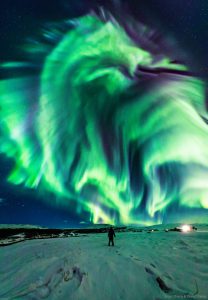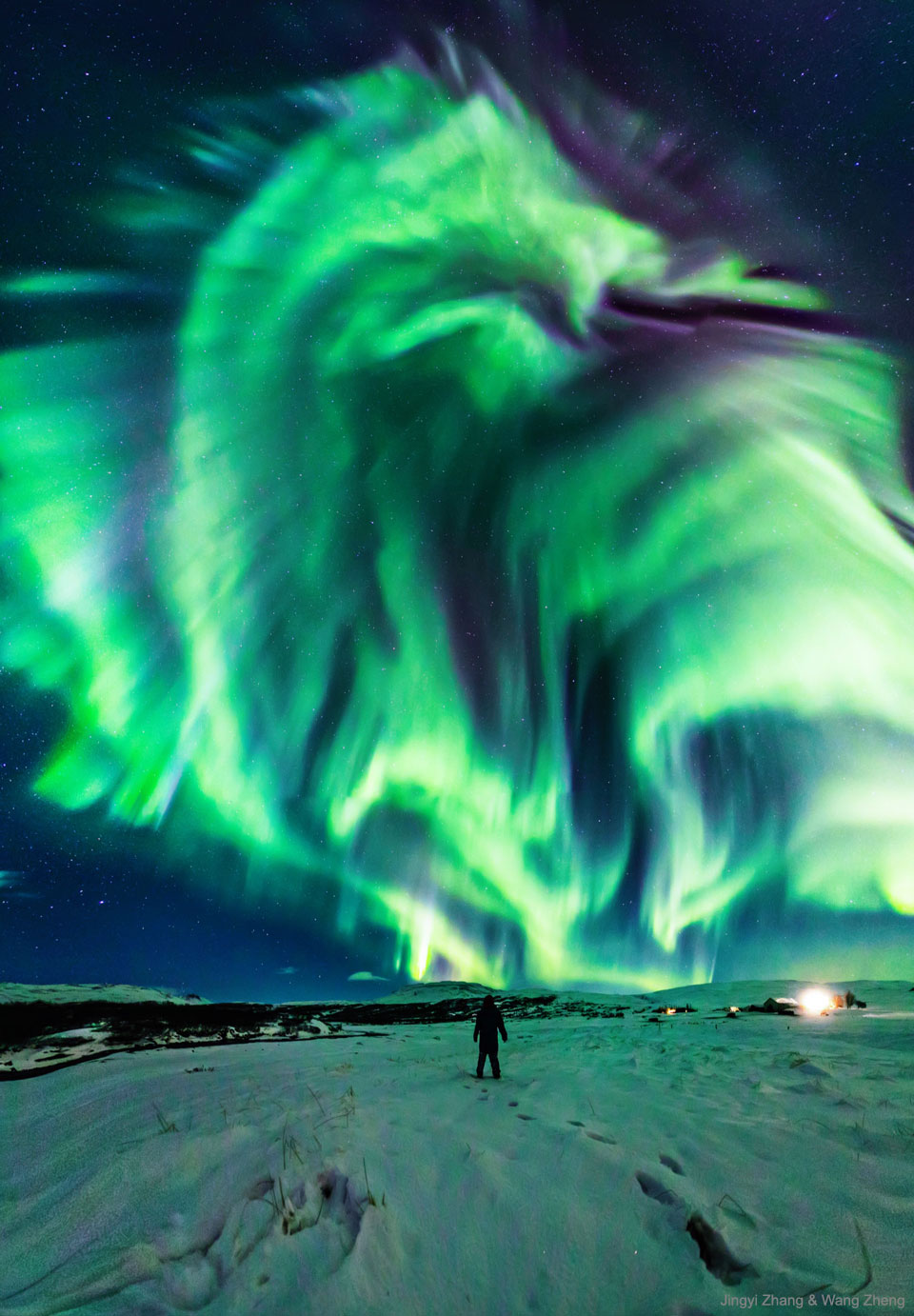An image of a dragon-shaped aurora light display over Iceland shared by NASA this week has captured the attention of media outlets and sky watchers around the world. Local photographers may be able to capture a similar image at Yellowknife’s own aurora festival next month.
While NASA was quick to debunk sky dragons – stating ‘real flying dragons don’t exist’ – the unique aurora so enthralled the photographer’s mother that she ran outside to see it. She can be seen in the photograph, taken in Iceland earlier this month. The image was posted on a website where the space agency shares a daily astronomy photograph and background by a professional astronomer.

“The aurora was caused by a hole in the Sun’s corona that expelled charged particles into a solar wind that followed a changing interplanetary magnetic field to Earth’s magnetosphere,” the website reads. “As some of those particles then struck Earth’s atmosphere, they excited atoms which subsequently emitted light: aurora.”
Local photographer and author of Aurora Up! Bill Braden began taking photos of the aurora over Yellowknife as a teenager. Working with black and white film, Braden remembers one photo he took in the late 1960s of the Northern lights on the Yellowknife horizon, which he entered in an Edmonton Journal photo contest. “I won an honourable mention, so I think that’s what got me hooked – long ago and far away.”
Braden says the arrival of digital photography has really brought the beauty and reality of the aurora borealis to the world. People can now see the light phenomenon accurately and capture it themselves.
“I think what really makes an outstanding aurora picture is when you can get, I call it, rhythm and shape and contour,” he says.
Braden adds it’s worth waiting for the lights to get more intense and bright before snapping a photo. “What really makes it attractive to the eye is getting those swirls. Those nice, beautiful, round shapes that a good, strong aurora display will give us.”
Braden will speak about the science, legends and technique of capturing the aurora on camera, something he says isn’t so difficult, at a free workshop next month. The event will be held March 4th, starting at 3 p.m., at the Prince of Wales Northern Heritage Centre.
Braden’s workshop is part of the week-long Naka festival, a celebration of the aurora borealis and Dene culture. Storytelling, drum prayers and art demonstrations are all part of the March 3rd to 8th festival, taking place in Yellowknife and Dettah.
READ MORE: NEW YELLOWKNIFE FESTIVAL CELEBRATES AURORA BOREALIS AND DENE CULTURE




